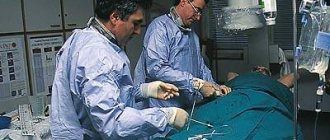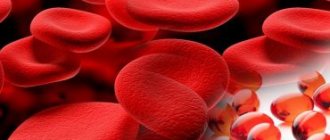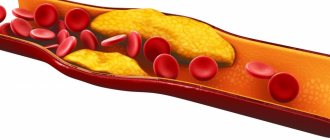Composition of Nicotinic acid tablets
Each tablet contains 50 mg of nicotinic acid. The excipients are:
- calcium stearate;
- corn starch;
- sugar;
- talc.
The tablets are white, made in a classic round shape. If a person’s daily diet does not contain enough products containing Vitamin B3, it is necessary to resort to a dietary supplement in the form of tablets.
Nicotinic acid is found naturally in the following foods:
- beef or pork liver;
- red meat;
- soy;
- young peas;
- yeast.
To provide the body with nicotinic acid, you need to consume 150 g of liver or 200 g of meat daily, and also prepare dishes with the addition of green peas.
Tablet forms, available in 10 or 50 pieces per package, help compensate for the lack of vitamin.
Publications in the media
Vitamin PP (vitamin B3, niacin, nicotinic acid, nicotinamide) is a water-soluble vitamin found in meat and fish products. Found in most foods containing vitamin B1. With severe food deficiency, pellagra develops. Endemic to some areas of Africa and Asia, sporadically found everywhere.
Sources of the vitamin are meat, liver, kidneys, milk, fish, yeast, vegetables, fruits, buckwheat.
Physiological role. Nicotinic acid amide is a prosthetic group that is part of NAD and NADP. NAD and NADP are hydrogen and electron acceptors and participate in redox processes, i.e. take part in cellular respiration.
Daily requirement • For adults — 18–24 mg • For children •• 6 months–1 year — 6 mg •• 1–1.5 years — 9 mg •• 1.5–2 years — 10 mg •• 3–4 years - 12 mg •• 5-6 years - 13 mg •• 7-10 years - 15 mg •• 11-13 years - 19 mg.
VITAMIN PP DEFICIENCY
Causes • Primary - lack of incoming food, for example, when corn predominates in the diet, since vitamin PP, although contained in it, is in a bound state and is not assimilated in the gastrointestinal tract. In addition, corn proteins are poor in tryptophan, which is used in the body for the synthesis of endogenous vitamin PP • Secondary - due to impaired absorption or assimilation of vitamin PP, as well as an increase in the need for it •• Prolonged diarrhea •• Liver diseases (most often cirrhosis leads to deficiency) • • Alcoholism •• Parenteral nutrition without sufficient replacement of vitamins •• Malignant carcinoid tumors (increases the need for tryptophan) •• Diabetes •• Hartnup's disease.
Clinical picture. Vitamin PP deficiency causes dysfunction of the skin, mucous membranes, gastrointestinal tract and central nervous system. Characterized by the presence of three Ds (dermatitis, diarrhea, dementia) and damage to the mucous membranes.
• Stage of prehypovitaminosis - nonspecific disorders (weakness, fatigue, loss of appetite, etc.).
• Stages of hypo- and vitamin deficiency •• Dermatitis. Skin lesions can be of four types. Most often it is symmetrical and occurs on areas of the skin exposed to solar radiation or trauma (pressure) ••• Skin manifestations in the form of pellagritic erythema occur acutely, followed by the formation of blisters, blisters, and crusts. A secondary infection is often associated ••• Damage to skin folds - redness, maceration, erosion and the addition of a secondary infection ••• Chronic hypertrophic changes - the skin thickens, loses elasticity, becomes folded. Marked pigmentation is noted in open areas of the body and in places subject to pressure. The lesions have a clear boundary and are surrounded by a border of recovering epithelium ••• Chronic atrophic changes in the skin with loss of elasticity and peeling. Characteristic of long-term forms of pellagra •• Damage to the mucous membranes primarily affects the oral cavity, although the mucous membranes of the vagina and urethra may be involved ••• Acute failure is characterized by glossitis and stomatitis, and the tongue becomes bright red in color. Initially, the tip and edges of the tongue are involved in the process, as well as areas of the mucous membrane surrounding the outlet of the Stenon's duct ••• Gradually the entire mucous membrane is involved, the tongue becomes painful and swollen, hypersalivation occurs ••• In the later stages of the disease, a characteristic picture of a lacquered tongue appears ( bright red tongue with a smooth surface due to atrophy of the papillae) ••• Ulcers may appear on the mucous membrane of the floor of the mouth, lower lip, and also opposite the molars •• Diarrhea is the most characteristic sign of dysfunction of the digestive system. Gastrointestinal tract involvement occurs in the later stages of the disease. Characterized by the appearance of a burning sensation in the mucous membrane of the oral cavity, pharynx, esophagus; gastric dyspepsia occurs in the form of nausea, less often vomiting, which is caused by atrophic changes in the gastric mucosa and the occurrence of achylia. Possible diarrhea alternating with constipation. A severe course is indicated by diarrhea streaked with blood as a result of the formation of erosions and ulcers of the intestinal mucosa •• Dementia is the most striking sign of damage to the central nervous system; may be accompanied by organic psychosis and/or encephalopathic syndrome. In the early stages, irritability appears, signs of polyneuritis are possible ••• Organic psychosis is manifested by hallucinatory-paranoid, affective symptoms, psychomotor agitation ••• Encephalopathic syndrome, characterized by blackouts, hypertonicity of the muscles of the limbs, the appearance of uncontrolled sucking and grasping reflexes •• In the later stages, they are impaired functions of the endocrine system, hypoproteinemia occurs.
Diagnosis • Urinary excretion of N'-methylnicotinamide less than 4 mg/day • Decreased nicotinic acid levels • Decreased levels of other B vitamins in the blood and urine.
Differential diagnosis - other causes of stomatitis, glossitis, diarrhea, dementia. When signs of central nervous system disorders appear, it is necessary to differentiate from those with vitamin B1 deficiency.
Treatment • In moderate and severe cases, hospitalization is necessary • Diet. Inclusion in the diet of foods rich in vitamin PP (meat, eggs) and tryptophan (milk) • Prescription of nicotinic acid (or nicotinamide) from 300 to 1000 mg/day orally at the beginning of treatment with a marked decrease in the content of vitamin PP in the blood plasma, then 300 –500 mg • For gastrointestinal diseases, nicotinic acid (or nicotinamide) is administered parenterally (50–100 mg IM 2–5 times a day or 25–100 mg IV) • At the same time, 5 mg of thiamine, riboflavin and pyridoxine are prescribed • Caution should be exercised when using nicotinic acid with concomitant glaucoma (possible exacerbation), gout (large doses cause hyperuricemia), liver pathology (large doses can have a hepatotoxic effect), arterial hypotension (due to the vasodilator effect of the drug), peptic ulcer (possible exacerbation ) • To reduce the side effects of nicotinic acid (redness of the face and upper half of the body, dizziness, rash), it is recommended to start treatment with low doses of the drug and gradually increase them, and/or take nicotinic acid orally after meals or with milk. Tolerance to the vasodilatory effect of nicotinic acid usually develops within the first 2 weeks • Nicotinamide, unlike nicotinic acid, does not have a vasodilatory effect.
The course is usually progressive.
Prevention • Nutrition with sufficient dietary content of foods rich in nicotinic acid • In the endogenous form - timely diagnosis and treatment of diseases that impair the absorption and assimilation of vitamin PP, prophylactic administration of nicotinic acid preparations; additional administration of vitamin PP to persons with an increased need for it.
Synonyms • Asturian rose disease • Rose disease • Pellagra • Lombardy pellagra • Scorbutum alpine
ICD-10 • E52 Nicotinic acid deficiency [pellagra]
Indications for use of nicotinic acid
First of all, nicotinic acid is necessary for problems with blood vessels, especially with high cholesterol and low elasticity of the vascular wall. Cholesterol is dangerous due to the accumulation of plaques on the walls of arteries and veins. Over time, the accumulated layer of cholesterol significantly narrows the lumen of blood vessels, which slows down blood flow due to decreased patency of the circulatory system. In addition, a detached blood clot carries a mortal danger - ischemic stroke, which leads to necrosis of brain tissue, paralysis and loss of normal brain activity.
It is impossible to predict the presence of plaques without a special medical examination. They do not make themselves felt, especially in the initial stages of formation. And only severe deep vein thrombosis can manifest itself as asymmetrical swelling of the lower extremities, visible nodes in the veins and pain in the legs.
Inelastic vessels, especially cerebral vessels, make themselves felt with the following symptoms:
- a sharp change in body position from horizontal to vertical is accompanied by darkening of the eyes;
- headaches occur when there is a sharp change in temperature, which occurs in baths and saunas, when a person leaves the steam room and plunges into an ice bath;
- palpable pain in the eye sockets and forehead, which occurs as a reaction to bright light.
The inability of blood vessels to change their size: to expand when heated and contract when the temperature drops leads to improper thermoregulation and an imbalance in the blood supply to organs and tissues.
In addition, nicotinic acid is necessary for colitis, trophic ulcers, as well as in the presence of long-term non-healing wounds on the skin. Raynaud's disease is also a direct indication for the replenishment of nicotinic acid in the body, because it is manifested by damage to small arteries, mainly at the fingertips.
Contraindications for use
Nicotinic acid has few contraindications. Vitamin B3 is not recommended to be taken if you have the following pathologies:
- serious liver dysfunction;
- stroke;
- increased sensitivity;
- bleeding;
- peptic ulcer at the acute stage;
- children under 2 years old;
- hyperuricemia;
- severe forms of arterial hypertension;
- gout.
Nicotinic acid tablets: instructions for use
It is recommended to start taking Vitamin B3 tablets with a minimum course of 50 mg of the drug per day at a time. In the absence of negative reactions, you can gradually increase the daily dose if prescribed by your doctor. For better absorption of nicotinic acid, it is necessary to take it with food, and what is important is that the food must contain fat, because Vitamin B3 is a fat-soluble substance.
In the first week of use, redness of the facial skin, a feeling of heat, and itching may occur. Symptoms usually disappear over time if the course of treatment is continued without increasing the dosage, in a stable manner.
special instructions
Nicotinic acid helps not only in the fight against atherosclerosis, but also strengthens the human immune system. According to some data, increased concentrations of the drug can stop the development of HIV and some bacterial infections.
The standard daily requirement for vitamin B3 is 16-28 mg for men and 14-20 mg for women. In this case, the dosage can be increased for people whose work involves mental activity and increased physical activity. A special need for nicotinic acid is observed in pregnant women, as well as during breastfeeding.
Normally, vitamin PP has a beneficial effect on the cardiovascular, nervous and digestive systems. There is also evidence that the substance prevents the formation of cancer cells. Therefore, its intake is absolutely necessary for every person, especially those with vitamin B3 deficiency.
Drug interactions
Nicotinic acid is used with caution simultaneously with other vasoactive drugs, since it enhances the effect of vascular relaxation, which causes a drop in blood pressure.
Concomitant use with bile acid sequestrants is also dangerous, since they also reduce cholesterol in the blood. If there is a need for both drugs, nicotinic acid should be taken no earlier than an hour after taking the sequestrants.
Vitamin B3 may help improve blood sugar levels. Therefore, patients with diabetes should undergo treatment under the supervision of a specialist. Additionally, you should keep in mind that taking dietary supplements containing nicotinic acid reduces the effectiveness of the following medications:
- "Glipizide";
- "Insulin Lizpro";
- "Gliquidone";
- "Phenobarbital".
In addition, for any other prescriptions, you should inform your doctor about taking nicotinic acid in order to exclude dangerous combinations.
Disease prevention
In order to prevent the development of the disease or its recurrence, the patient must take the following set of preventive measures.
- Proper nutrition . The patient increases the number of servings, and accordingly the amount of nutrients. In addition, a change in diet is expected - no fast foods or processed foods. The patient should eat more foods rich in proteins and fats. These include fruits and vegetables, various cereals, and meat. All this should be natural. The balance of water in the body is no less important. You need to drink water. Supermarket drinks are not permitted.
- Sports activities . “Movement is life,” Aristotle said many years ago. And indeed it is. Therapeutic exercise strengthens the locomotor system, improves its functioning and restores body functions. Walking, running, aerobics - all this is suitable for the prevention of osteochondrosis.
- Physical exercise . They must be excluded, but evenly. Hard work is canceled because bones, muscles and joints have not yet recovered. Light loads, on the contrary, are allowed in order to develop the locomotor system after the course of treatment.








